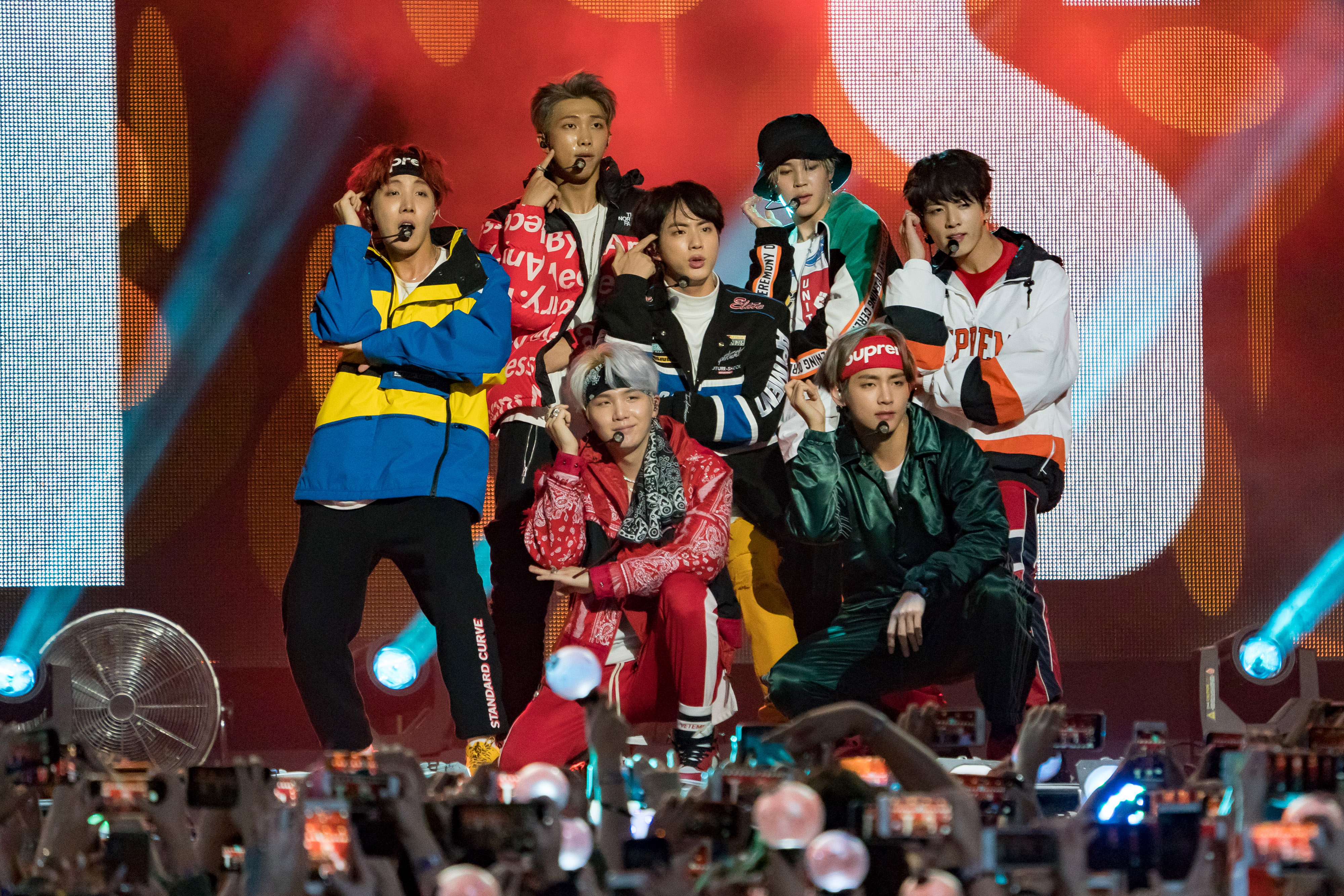K-pop is a term used to describe music and artists originating in South Korea’s popular music industry. K-pop sometimes is considered a musical genre (style). However, it is not a true one, because of its great diversity of sound and style. K-pop more generally describes the audio-visual experience of the music, videos, and performances of young pop stars called idols. English-language media regularly use K-pop as a catchall term referring to mainstream Korean music and the companies, people, and entertainment content associated with it. Besides young idol acts, some other types of musicians—including hip-hop artists—who have risen to prominence in South Korea also work within the K-pop industry. In South Korea, however, K-pop almost always refers to idol acts and their music.

Musically, K-pop is associated with blends of electronic dance music (EDM), hip-hop, pop, and rhythm and blues (R&B). Most K-pop singles (promotional recordings of a single song) are dance songs with catchy, repeated phrases in the chorus. However, sentimental, romantic songs called ballads also are popular. Singles typically are released through music videos and often are combined with high-intensity choreography (dance moves). Many songs incorporate both Korean and English lyrics, and K-pop stars also frequently release music in Chinese and Japanese. Most K-pop songs are about romantic relationships. However, some groups have released songs addressing social and political issues in South Korea and the wider world.
K-pop as it is now known is considered to have begun with a 1992 television performance by the group Seo Taiji and Boys of their song “Nan Arayo (I Know).” The song is a mix of pop, hip-hop, and a style called new jack swing. The group H.O.T., which stands for High Five of Teenagers, is considered the first K-pop boy band. The group was formed in 1996 by the SM Entertainment company.
The most prominent K-pop acts generally are boy bands and girl groups with 5 to 10 members, but there also are smaller acts and many K-pop soloists. Groups feature artists who sing, rap, and dance, showcasing their talents through music albums, live performances, and sleekly produced music videos. K-pop groups usually are formed and managed by entertainment companies that seek out talented individuals to present as artists after long periods of training. Many K-pop idols also pursue acting, modeling, and other careers. In addition to Koreans, a growing number of Chinese, Japanese, and performers of other ethnic backgrounds emerged as K-pop artists in the 2010’s. 
The rise of the video-sharing website YouTube introduced K-pop to a broader audience during the late 2000’s and early 2010’s. Such groups as 2NE1, BIGBANG, Girls’ Generation, Wonder Girls, Super Junior, and TVXQ! attracted widespread attention. The international hit song “Gangnam Style” by South Korean rapper PSY also gained the South Korean music industry wider recognition. Today, K-pop stars and music are popular around the world, and K-pop artists often tour internationally. Many work with musicians and songwriters from around the globe.
In the United States, K-pop has a sizable niche (specialized) following. In 2009, BoA and Wonder Girls became the first K-pop performers to rank on Billboard magazine’s most prominent popular music charts. In 2018, the album Love Yourself: Tear by the group BTS became the first K-pop album to top the “Billboard 200” chart of popular albums.
